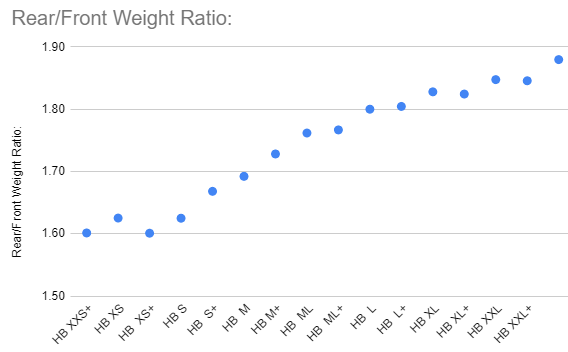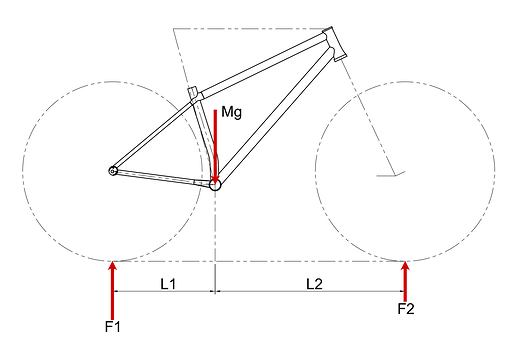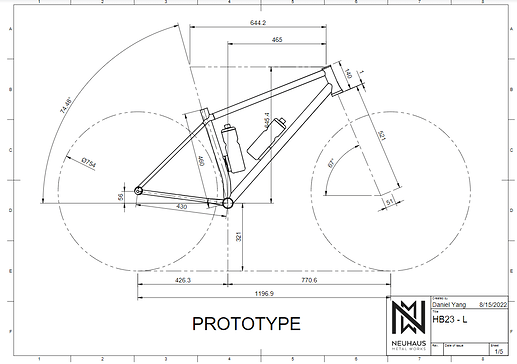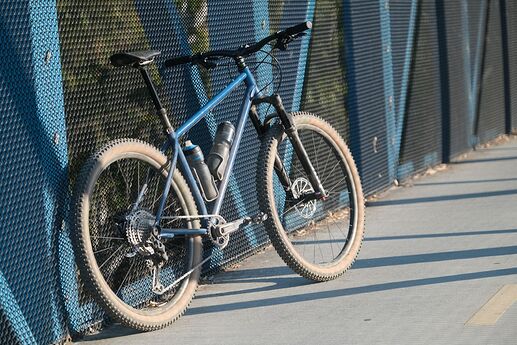Some good discussion going on. Thanks for keeping everything civil.
As a tool to aid in discussion, I propose a parameter I look at: rear-front ratio (RFR).
Assumptions:
- Flat ground
- weight is through the bottom bracket (ie. standing up)
Rear wheel force: F1 = L2/(L1+L2) * Mg
Front wheel force: F2 = L1/(L1+L2) * Mg
The rear/front ratio is really easy to calculate because most of the terms cancel themselves out:
rear-front ratio: RFR = F1/F2 = L2/L1
To put it in words: you divide the front center by the rear center, giving you the ratio of the weight on the rear and front wheels. For example, an RFR of 1.85 means the rear wheel has 1.85x the weight of the front wheel.
Here is the spread for our Hummingbird frame:

In my experience, I have found bikes with a ~1.88-1.9 RFR to be on the margin of “well-rounded” for how I like to ride. It’s fun to descend, but I really need to be mindful of flat corners and tight switchbacks. It was much harder to ride when I was fatigued or riding blind on a natural trail.
Right now I have been enjoying a bike with a (GASP) 67deg headtube angle (unsagged!), with an RFR closer to 1.81.
The rear-front ratio is just one parameter I look at. I don’t have any overarching design law that I follow (aside from good bike fit).


